ENGLISH


ENGLISH
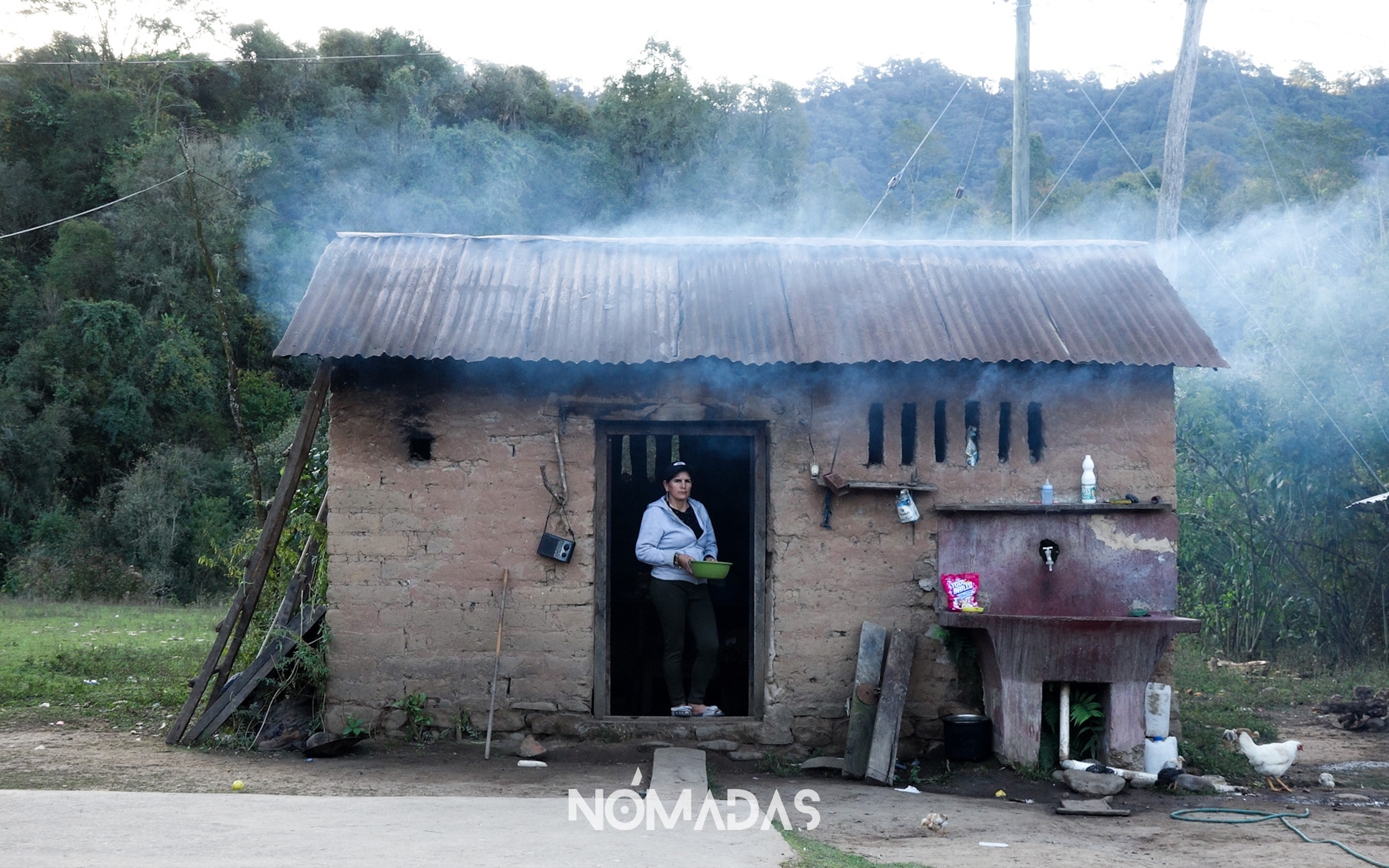
Paula Gareca suffers the consequences of her struggle, but she doesn’t waver in her goal.
October 11th, 2023
The fight to prevent oil activity from consolidating its entry into the Tariquía National Reserve of Flora and Fauna comes at a high cost. Defenders of this important paradise for the world endure everything from «indecent offers» to physical assaults and personal defamation.

Roberto Navia
Journalist

Iván Paredes
Journalist
The Life of Paula, however, unfolds in a complex plot of sacrifices and struggles. Words flow from her lips with a tone laden with melancholy when she speaks of how her existence was marked by the noble cause she embraces. She is the voice that cries out for the protection of the Tariquía National Flora and Fauna Reserve, a natural Eden in southern Bolivia. But this battle, which could have been heroic, has left deep scars in the fabric of her life.
It’s not just sleepless nights that torment her, but also the threats that reach her ears. Even those with whom she shared childhood games and youthful laughter now point at her as the obstacle on the path to progress. They accuse her of closing the doors to development in Tariquía, as if progress and nature were incompatible.
And yet, Paula Gareca persists in her commitment. In the Tariquía National Flora and Fauna Reserve, where every breeze whispers secrets of ancient trees and every river flows like a vital artery, a new threat keeps her on edge: The activity of the oil industry looms once again, ready to unearth the hidden treasures beneath the earth’s surface. But Paula is there, on the frontlines, wielding her courage as a sword and her love for the land as a shield.
Paula’s life, however, unfolds in a complex tapestry of sacrifices and struggles, and words flow from her lips with a tone laden with melancholy when she speaks of how her existence was marked by the noble cause she embraces.
However, Paula Gareca is not alone in this crusade. Like stars that light up in the darkness, other activists stand by her side, forming a wall of resistance against oil extraction inside Tariquía. Together, they hold the banner of conservation, fighting to prevent oil companies from desecrating this natural sanctuary that is the vital lung of the Tarija department and Bolivia.
«As a defender, my life has been destroyed: I separated from my husband, and two of my children were brutally attacked, and I am afraid to walk at night in the community,» she says, her voice unwavering as she continues her story. «We face many threats that affect us psychologically. There are cell phone calls that intimidate us. They tell us that oil exploration brings development and portray us as opponents of the communities, but it’s not true. From my perspective, I say that development should reach our rural areas unconditionally, without imposing conditions. If there will be a basic service, let it be, but not at the cost of destroying nature,» she emphasizes as she traverses the stunning landscape of Tariquía.
In addition to being an environmental activist, Paula Gareca is the executive secretary of the Tariquía Subcentral. It was in her home in the San José community where she received a visit from two people who came to flatter her, to ask her to change her mind, not to reject oil activity in Tariquía. They said they would give her the bundle of bills they placed on the table, that a new car would also be hers very soon—if she accepted—and that they would provide employment for her, her husband, and her son.
But she told them no, and those men in long-sleeved shirts never returned.
But Paula’s husband, who was there that day listening to it all, became furious and confronted her with the manners of an emperor. He asked her why she was so foolish, why she didn’t think about her family, how they could have started a business with that money and used the car to transport agricultural produce to Tarija.
But she stood her ground and told him she would never sell her principles or betray the place where she was born. The emotional pressure continued, as did her resistance. They later separated. But Gareca also saw how her children were assaulted. They were attacked simply because they were the children of the activist.
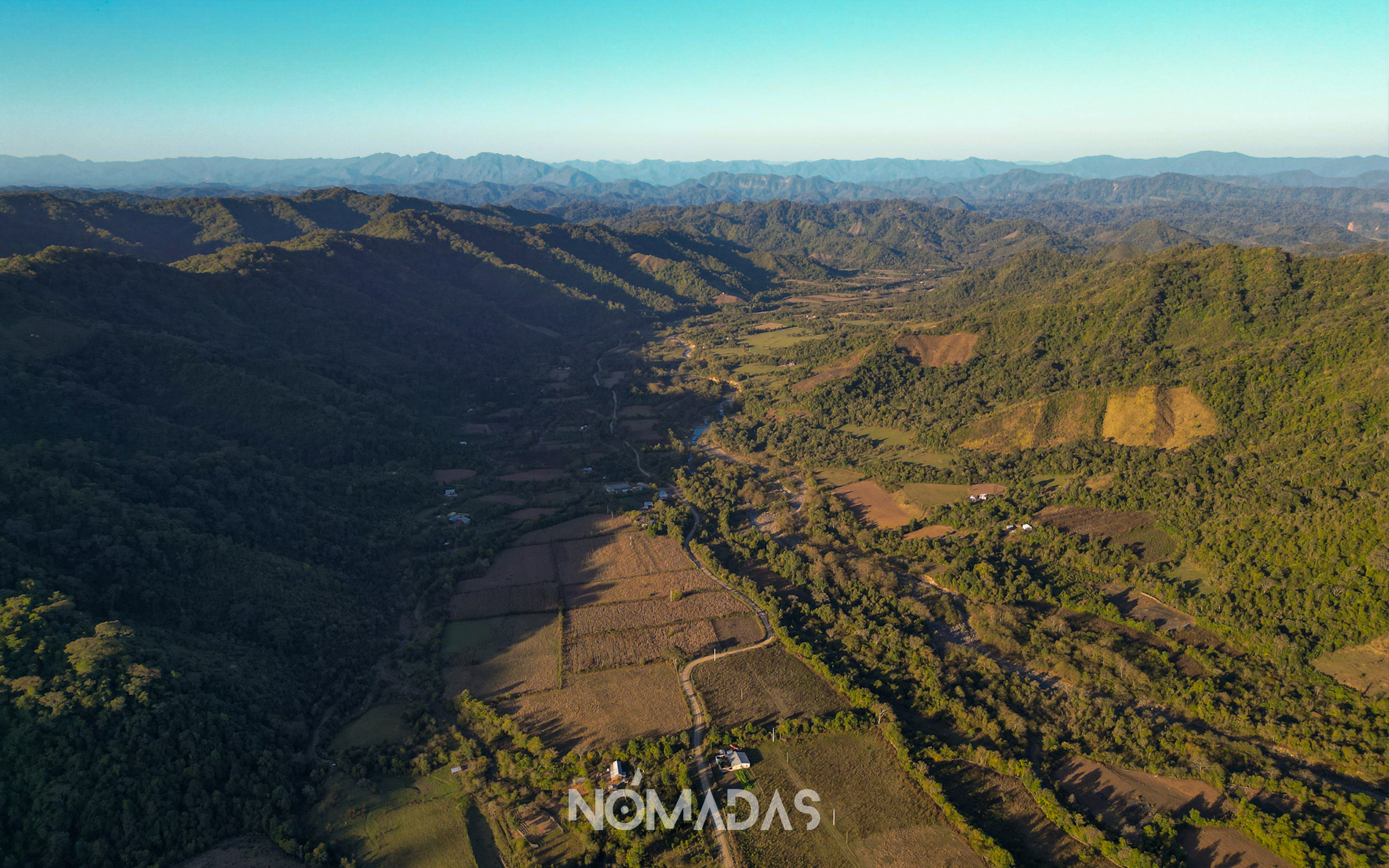
Agriculture is being developed sustainably in the protected area.
«I can’t walk alone; I always have that fear of being attacked, of being defamed, so I prefer not to go out. I make a living by growing vegetables, potatoes, corn, peas, all to sell. I also produce honey. That’s my livelihood. I also have my little animals,» Gareca recounts, beneath the shade of the reigning trees in Tariquía.
Paula Gareca is not alone in this crusade, like stars that shine in the darkness, other activists stand beside her, forming a wall of resistance for the Tariquía reserve.
The Tariquía National Flora and Fauna Reserve covers 246,870 hectares of forest in the Tarija department, and the area compromised by hydrocarbon blocks is 128,083 hectares. There are four oil blocks established within the Tariquía reserve dedicated to hydrocarbo
In the Astillero area, exploration work has already begun. In Churumas, petroleum work has also commenced. In both cases, there was strong opposition to the projects, but the tractors attempted to silence those cries for help. Very few listened to the defenders of Tariquía, who are now more concerned, Paula laments. «The government’s idea is to enter the core of the protected area, where birds and other animals have their homes. If the intention to search for hydrocarbons continues, there will be many environmental consequences, one of them being water scarcity,» she warns.
As she passes through the San Pedro community, Paula spots the Timboy tree: a splendid specimen over 10 meters tall. «That’s where Ebelio the flyer took off from,» she says, unable to hide a mischievous smile. In a couple of minutes, she summarizes that story:
She recounts that Ebelio García was considered a visionary from a young age, who dreamed of flying like a condor to overcome the lack of roads and save lives in his remote region. With ingenuity, he built wings and took flight, seeking to change the history of Tariquía.
«However, his feat was not realized. Although many witnesses claim that he flew for a couple of seconds, he fell to the ground with all his weight,» recalls Paula Gareca, who details that Ebelio spent two months in bed. Still, his bravery was recognized because he risked his life for the well-being of his community in Tariquía, where he is still remembered as «Ebelio the flyer.»
A few meters from the tree from which Ebelio took off, the gentle Tariquía River flows by, reminding us that the Tariquía Reserve is considered a humid forest that generates significant amounts of water, not only due to the wetlands but also through the evapotranspiration of the trees that still stand tall in the vast landscape. In this space, the winds also play a fundamental role, as they are the oxygen source for several regions in southern Bolivia, especially the capital of Tarija.
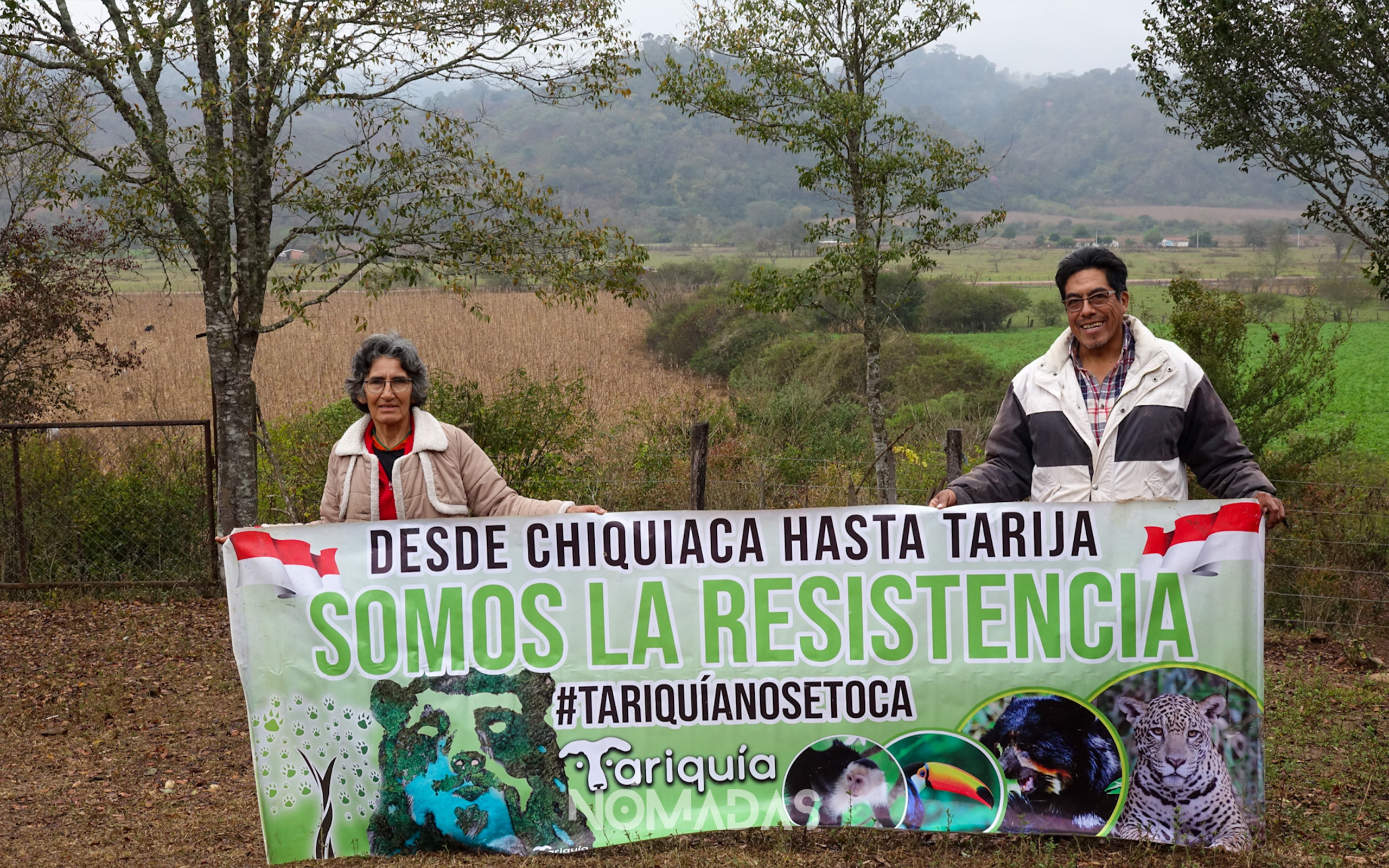
Nelly Coca and Andrés Miranda display a banner with which they have been defending Tariquía.
Isidro Gareca lives in the El Cajón community, which is on the southern border of the Reserve. One early morning in March 2021, Isidro was heading to the city of Tarija, and as he walked, he heard eight shots fired very close to him. He panicked and ran to a safe place, leaving his backpack on the ground. He didn’t see anyone, but since that day, fear haunts him everywhere. He is one of the many victims in Bolivia for being a defender of a protected area.
In the vast panorama of life in Bolivia, there is a unique story, a story woven in the heart of the Tariquía National Reserve of Flora and Fauna, where nature displays its majesty in every corner of this natural gem.
Bolivia is one of the countries with less regulatory development in favor of those who protect environmental rights. Attacks against environmental defenders focus on tarnishing their public image, labeling them, stigmatizing them, harassing them, indirectly harassing them—through administrative or labor means—intimidating them, and psychologically wearing them down. Among all these forms of attack, there is also a strategy that is very common in Bolivia when attacking environmental leadership: the division of indigenous or peasant organizations.
And that is what Tariquía is suffering. Division has forced some activists to suffer aggression and intimidation for defending their territory. Others want the heavy machinery of the oil company to enter to see their lands drilled. Isidro Gareca believes that the shots he heard are from fellow community members who are «upset» with him because he defends his home. He does not want to see Tariquía without water, without fauna, without flora. He doesn’t know how else to defend his space.
«The aggressions crossed the line. I felt that my life was in danger when they fired into the air as I was leaving my house. That’s a threat, I know it. I defend my territory, I defend my home, I don’t want to see the Tariquía Reserve without water, although now we are starting to see water scarcity. It seems that it’s because they brought in machinery, but others say it’s due to the climate crisis,» says Isidro.
The government’s plan to explore hydrocarbons compromises more than 136,000 hectares of forest, equivalent to 55% of the Tariquía Reserve, according to information from the Documentation and Information Center of Bolivia (Cedib). This surface area is four times the size of the city of Santa Cruz de la Sierra.
Nelly Coca Flores is part of the Defense Committee for the Tariquía Reserve. She receives Revista Nómadas at her home in the Chiquiacá community, which is inside the protected area. Along with her husband Andrés, they have built a small house on a slope, overlooking seasonal crops. Green predominates in the landscape, which becomes more rewarding from the hill where Nelly’s house is located. She is also one of the activists who suffered aggression and intimidation for defending her territory. The activist refers to the reserve as the «common house» and is proud to have prevented the entry of oil companies into Tariquía. That fight had consequences.
«What is the first thing we look for when we wake up? Water. Why shouldn’t we defend that? Why can’t we defend our water? But being a defender is tough. We should be protected, but instead, we are threatened. They tell us that we are opposing development, that we are preventing people from having a better life. But that’s a lie. The pollution that companies will leave us with is irreversible, it will remain forever,» laments Coca.
Defender laments that Tariquía’s own community members are the ones threatening the defenders. She says that her neighbors are confused, and the companies entered to try to convince all the communities to carry out the oil projects. «Animals don’t have a voice; they are the main victims of pollution. Bees will leave because they cannot live in contaminated places,» warns Nelly.
In Tariquía, the best honey in the country is produced, as its inhabitants claim. Several communities are dedicated to beekeeping and are gathered in the Tariquía Reserve Beekeepers Association. They offer their products in various cities across the country. The Tariquía Reserve is home to 609 species of flora and 867 species of fauna, some of which are unique and endangered.
The morning when Revista Nómadas awoke in the enveloping setting of Chiquiacá, at the home of Nelly and Andrés, the sun timidly rose over the Tariquía Reserve, casting its first golden rays on the hills covered with lush vegetation. In this corner of southern Bolivia, nature unfolded in all its splendor, and its best-kept secrets were whispered by the wind to those willing to listen.
In Tariquía, the land and time seemed to merge in an eternal embrace. There, where the green of the jungle merged with the blue of the sky, the inhabitants with whom we later spoke without haste had a story to tell. They said that in this remote corner of the country, the best honey was produced, a golden nectar that spoke of the sweetness of life in this wonderful land.
Several communities in the region had been dedicated to beekeeping for generations, a legacy passed down from parents to children like an invaluable treasure. These families, united by their love for bees and their commitment to nature, shared their ancestral and modern knowledge here, caring not only for their beehives but also for the surrounding environment and the production of potatoes and corn, among other products that feed a significant part of Bolivia.
Walking along the trails of the reserve was like entering a magical world. At every step, the flora and fauna surprised with their diversity. The hills helped to enjoy the panorama and to see beyond the horizon.
The beekeepers of Tariquía knew that their work translated not only into delicious jars of honey but also into the protection of this natural treasure. Every bee buzzing in search of honey’s raw material, every flower in full effervescence, bore witness to their unwavering commitment to conservation.
On the other side of the mountains, in Pampa Grande, the bees also embarked on a harmonious dance of living beings, a choreography that had been perfected over centuries.
The scent of honey filled the air as the beekeepers worked with skill and care, tending to the bees and their natural home. They knew that honey was a precious gem, a gift from nature that deserved to be cherished for its taste and its story.
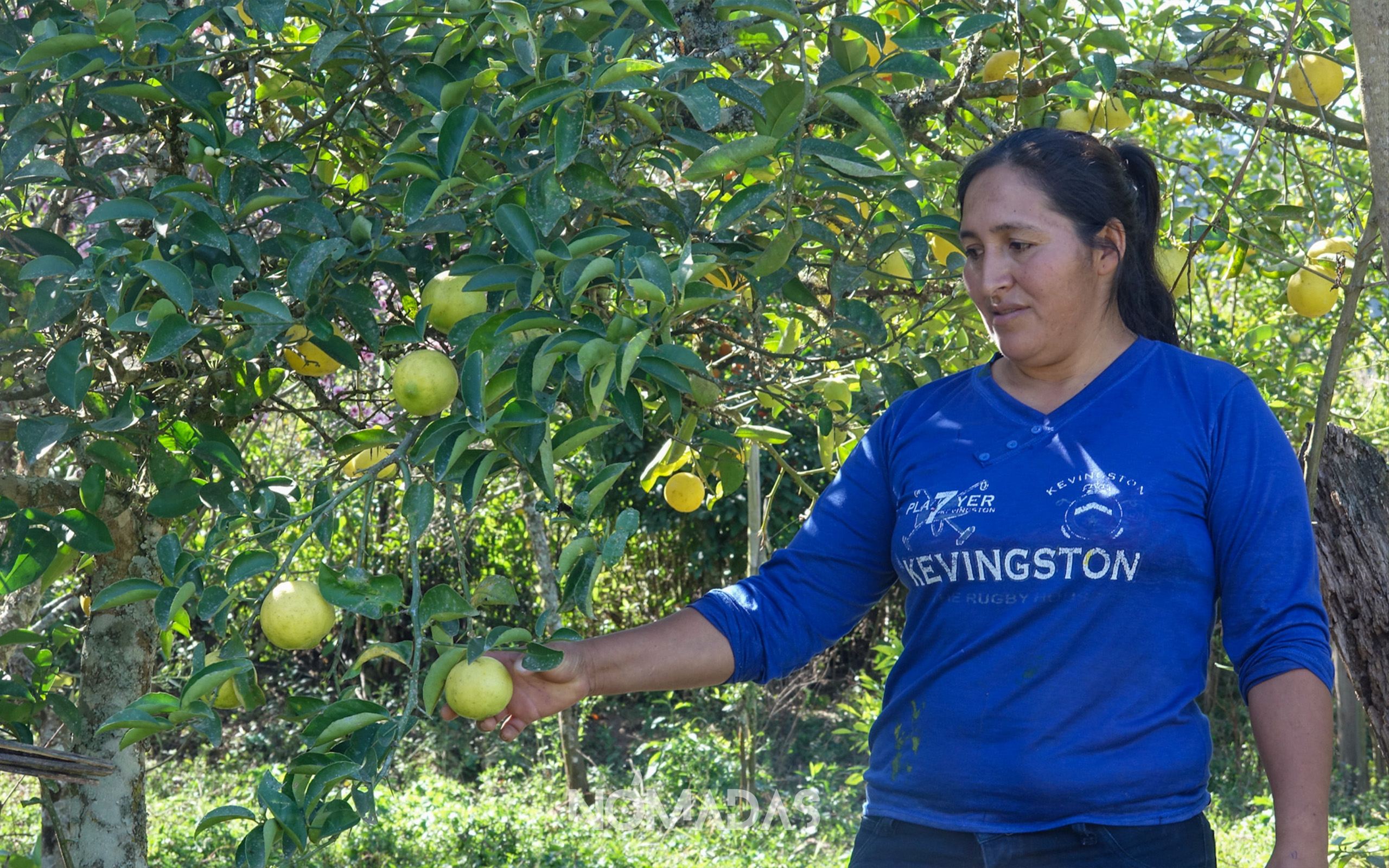
Gladys Gareca, a community member of Puesto Rueda, also reported harassment.
Yacimientos Petrolíferos Fiscales Bolivianos (YPFB) initiated exploration work at the Astilleros X1 wells, followed by Astilleros X2, as confirmed in a press release published on Saturday, April 1, 2023. Astilleros covers an area of 21,093 hectares and is located in the Arce and Gran Chaco provinces. YPFB Chaco, along with its subsidiary YPFB Corporación, will operate there, utilizing 67 million dollars for exploration and exploitation over the next seven years through three phases.
In the web of family relationships, division is the bitter refrain that resounds, with some succumbing to the «siren» song of oil companies, while others firmly hold the banner of the reserve.
«With an approximate investment of 67 million dollars, YPFB Chaco S.A., a subsidiary of YPFB Corporación, began exploratory drilling of the Astillero X1 Well (AST-X1) to assess the hydrocarbon potential of the Huamampampa, Icla, and Santa Rosa Formations in the Astillero-Domo Tarija Structure,» stated Armin Dorgathen Tapia, the president of the state-owned oil company, during a press conference in April of this year.
In various areas of Tariquía, exploration was conducted without leading to exploitation because the companies did not find what they were looking for. These areas remain as environmental liabilities and are affecting many families, according to testimonies from within the reserve. «Now they say they are going to drill six more wells; there is still more destruction to come because they plan to build about five heliports, burn pits, and damage mitigation is to the best of their ability. There are no sanctuaries or shelters for animals,» complains Isidro Gareca.
YPFB stated that the projects in the reserve were executed «strictly in compliance» with the current environmental regulations in coordination with local authorities, the Directorate of the Tariquía National Flora and Fauna Reserve, and relevant environmental authorities. The Government of Tarija states that YPFB has an environmental license.
Revista Nómadas attempted to obtain the position of the Ministry of Hydrocarbons, but received no response on more than one occasion. From that entity, they requested that the request for information be directed to YPFB, an institution that was also unable to provide information.
In the vastness of the Tariquía Reserve, the community of Motoví unfolds like a corner of dreams, where the bird’s songs continue to rise in an untouched melody, as if the current of time had stopped around it. The greenery of the landscape, a green that seems to seep from the most remote memories, places the visitor in a unique space, caressed by the slender mountains that stand as silent guardians. In this corner of the earth, Francisco López finds his home, a figure who inhabits the vice presidency of the Tariquía Subcentral Management Committee. Memories of the past intertwine with the present in his mind, dating back to 2015 when the defense of the reserve was raised as an unquestionable banner. His eyes, filled with concern, watch with unease what is happening within the reserve, and in his words, the history of how the repeated expulsion of the oil companies that threatened to disrupt the balance of that haven is traced, like a distant sound.
«We live off agriculture and livestock. In my community, we produce everything. That’s why we defend our territory. Year after year, the government continued to carry out projects, and the strange thing was that they had permission to enter the core of the reserve. We investigated and found out that they made a new management plan for the reserve. They reduced the protected area, and supposedly, where the wells are now, they say it’s not part of the core of the reserve,» says López.
Stefan Cramer is a German hydrogeologist and a member of the Senior Experts Service (SES) in Bonn, Germany. The expert resides in the city of Tarija and is part of the volunteer team at the Juan Misael Saracho Autonomous University of that capital. The scientist, who is also a groundwater specialist, explains that there are several risks associated with the entry of oil companies into the Tariquía Reserve.
Cramer explains that, in addition to the direct impacts in the area where gas wells are installed, indirect impacts «are several and much larger.» The scientist mentions the problems caused by the construction of roads and highways in the middle of the forest. «This is very significant environmental damage because these are ten-meter-wide roads, but they are in steep terrain, so they occupy nearly ten times more space. Moreover, they are in areas with high-quality forests, in the core area of the reserve,» says the German expert.
Cramer doesn’t hesitate to describe the Tariquía reserve as a «water bomb» for a large part of the Tarija valley. So, he says that if hydrocarbon projects are carried out, there will be serious risks to the water supply for various sectors of the Tarija department. «The Tariquía reserve functions like a water bomb. This function, outside the reserve, is very important for Bolivia and should be taken into account in all environmental impact studies,» he explains.
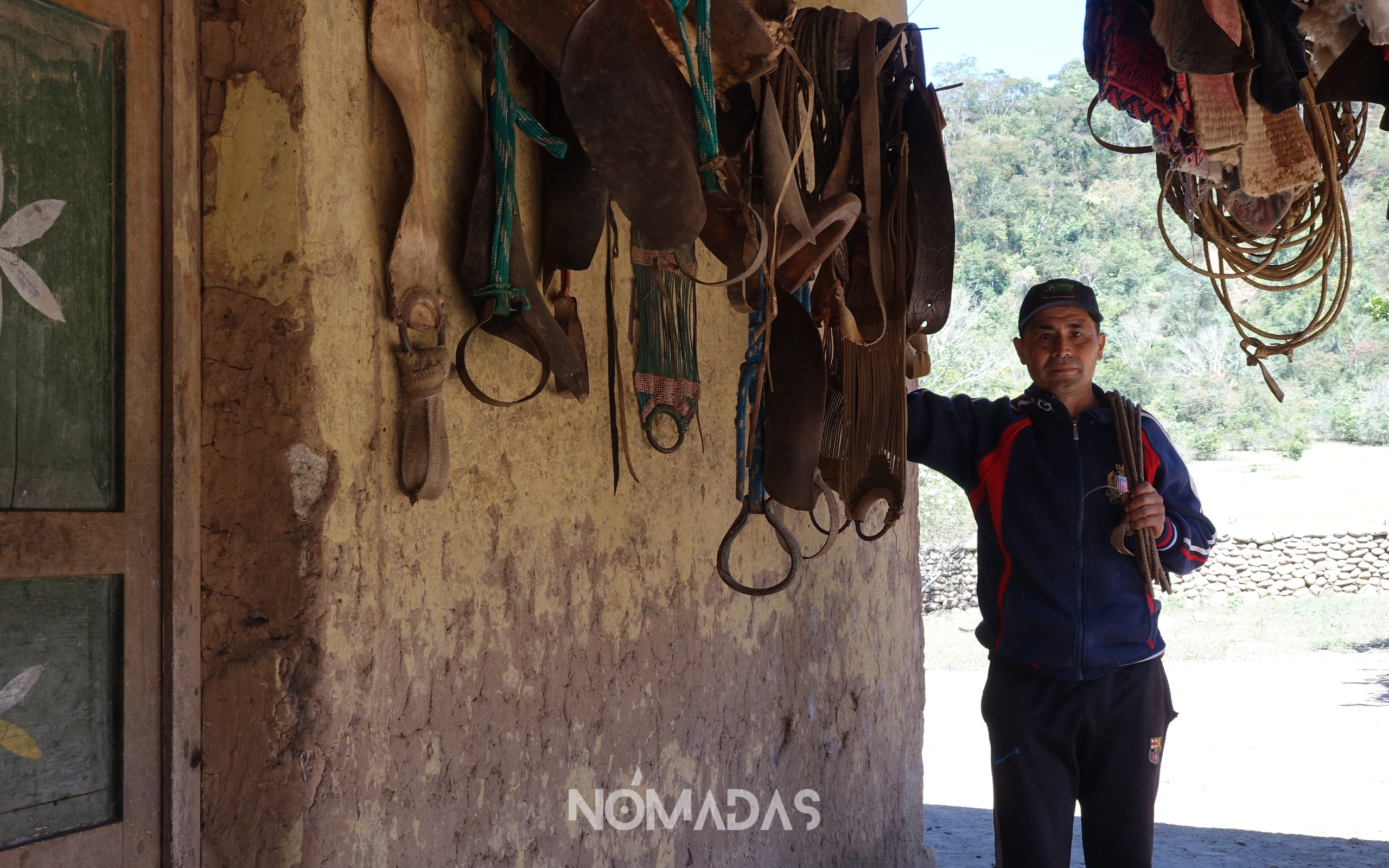
Francisco López shows the maps where it is stated that the oil company has set its sights.
Tariquía had an approved Management Plan (MP) by Ministerial Resolution 003/2001, issued by the Ministry of Sustainable Development and Planning, which was valid until the year 2004. As there was no other instrument available, this plan continued to be used as a management tool, according to a document from the Documentation and Information Center of Bolivia (Cedib).
The situation worsens when it is revealed that the harassment is not limited to the public sphere. Several defenders have experienced aggression and ostracism within their own communities and even their own families.
Since 2006, there were several unsuccessful attempts to update the management plan. On July 11, 2014, a new call for proposals was launched, and on August 18, the Administrative Contract for consulting services DIR-DJ-118/2014 was signed to develop the Management Plan for the Reserve.
This plan was delivered on December 15, and one day later, Technical Report DP No. 474/2014 was issued, approving the new management plan, stating that it complies with the established requirements. Then, on December 30, a legal report was issued, indicating compliance with the legal framework. On the same day, Administrative Resolution 159/2014 of the National Service of Protected Areas (Sernap) was signed and put into effect, approving the Tariquía Management Plan in its components: diagnosis, strategic framework, zoning, programmatic framework, and financial plan.
It is with this last component that the local communities disagree because they claim that its modification was not legitimate and that it downgraded the core area to «moderate use,» making it easier for oil companies to access areas that were previously prohibited.
López was also threatened and intimidated for defending Tariquía. He says he suffered violence from people who support the oil incursion and the government. This parallel group supports the entry of companies into Tariquía, but there is resistance in the 23 communities of the reserve. In Motovi, Francisco says, there are risks due to the entry of oil companies. They fear water scarcity and pollution.
«They don’t want to give us infrastructure or projects. They tell us we only defend the reserve and call us opponents of development. They call us neoliberals, they call us coup plotters, they call us all sorts of things,» the leader laments.
The Domo Oso X3 well is one of the government’s attempts to find concentrated gas in the Tariquía reserve. YPFB has listed this well as one of the exploratory projects, which is very close to the protected area, as a «force majeure project.» This means that the state-owned company has data, according to geophysical studies, showing a high probability of finding hydrocarbons in this area. Furthermore, the Domo Oso X3 is the only one at the national level to receive this classification out of the 36 announced by YPFB as part of its exploration package.
Gladys Gareca, a resident of the Puesto Rueda community in Tariquía, has been a tireless defender of the protected area for a decade. Today, she denounces that the main threat facing the reserve comes from the intrusion of oil companies. This encroachment, she warns, could deteriorate the quality and quantity of water in the region, a vital resource for her, her family, and all the inhabitants of Tariquía. This environmental confrontation has created deep divisions in the communities, even fracturing family ties. Gareca describes how many of her relatives were swayed by promises of employment from these companies once they begin their extractive operations. This tension has had a palpable impact on the social cohesion of Tariquía.
However, Gareca’s concerns are not limited to corporate invasion. She has also faced personal threats: «I have been a victim of physical and psychological threats. People from my community, including political leaders from neighboring areas, have hurled insults and defamation at me,» she shares with sadness. As she narrates her experience, her eyes rest on the lime and orange trees in her yard, an oasis of peace amidst the conflict that, she feels, has robbed her of her serenity.
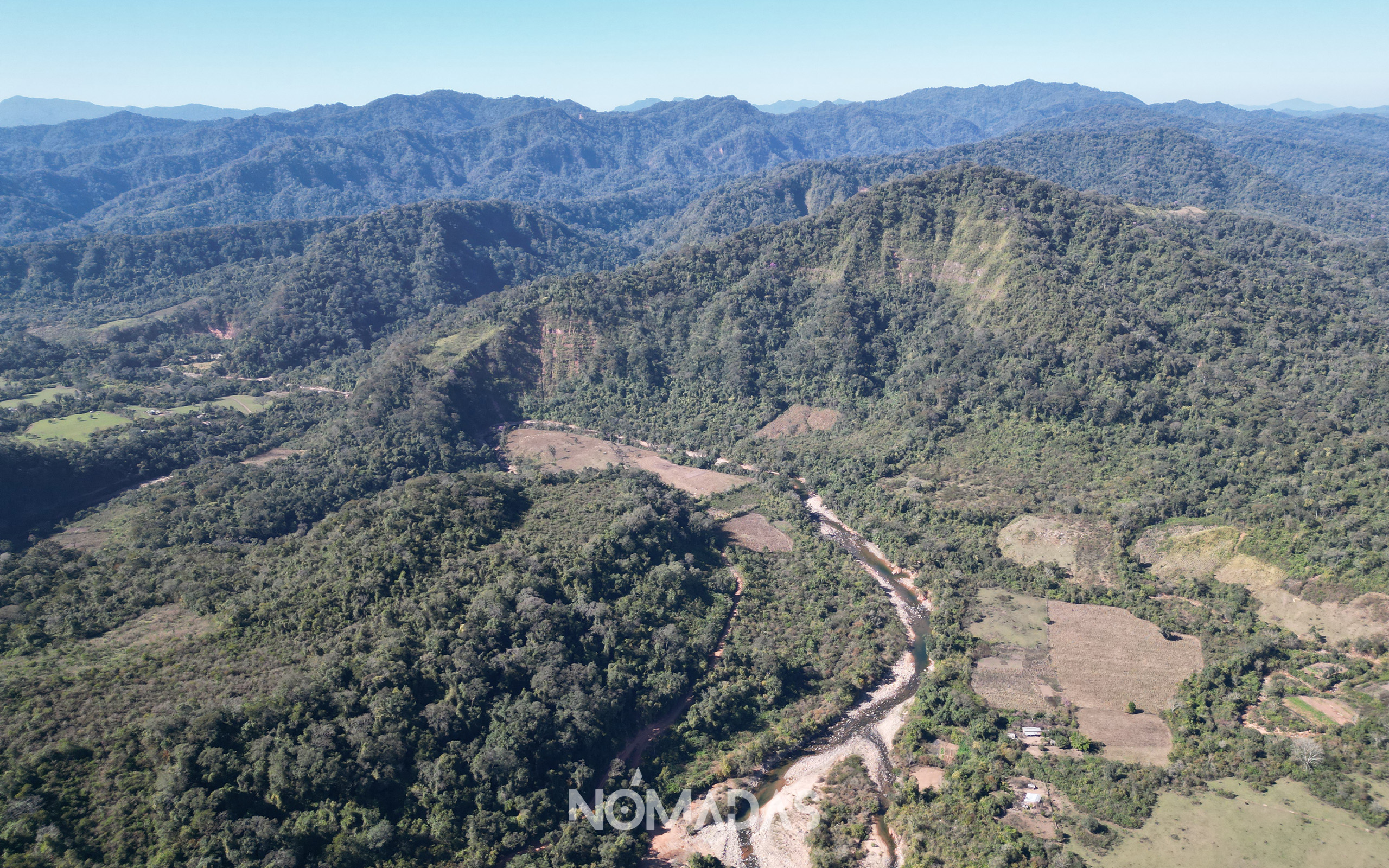
The river that provides water for humans and all living beings in Tariquía.
José Andrés Miranda, a somber member of the Tariquía Defense Committee, roots his presence in the confines of the Chiquiacá community. His voice roars with a sinister tone, like the warning wind in the twilight. From the core of his dwelling, a sanctuary of beauty and life, he utters his laments with an inescapable inevitability: the reserve lies in a dark precipice. «Water is the invisible executioner,» he sighs from the shadows, a somber omen that projects like the echo of a dire announcement. Through the cracks in time, his home becomes the pulpit from which he proclaims his message.
His scars of commitment are painful, a reminder of the price one must pay for valor. José Andrés, a torn witness, has been a victim of the threats that lurk in the environment of defending the natural sanctuary. Adversity and torment are the underlying notes in his narrative. «There are misfortunes and sorrows on this path of resistance,» he confesses with a voice clouded by the sadness of battles fought. In the web of family relationships, division is the bitter refrain that resounds, with some succumbing to the siren song of oil companies, while others firmly hold the banner of the reserve, engaging in a fierce battle of wills. The unsettling shadows of the government loom over them, their steps as silent as those of a stealthy hunter. «The commitment to safeguard our home has led us to leave behind the comforts of the past,» he laments with bitterness evident in every whispered word. «We have left behind the boundaries of our home, the animals we used to care for; in this pilgrimage, the losses have left deep scars.»
The forest, an endless cycle, begets a precious gift: A study from the Juan Misael Saracho University of Tarija confirms that a single tree, besides generating oxygen, produces around 2,800 liters of water and absorbs 28 kilograms of carbon dioxide.
This is known by José Andrés and all the guardians of Tariquía. They know that if the trees are devastated, the symphony of freshwater generation will fade away, along with honey production, agriculture, fruit-bearing plants, as well as the humans and animals that live in the reserve, will suffer the consequences.
I will defend this land against all odds. I will not yield to pressures or temptations. I have already lost my family home. All that remains is the forest, which is my great house,» says Paula Gareca as she looks out from her home’s patio at the hills that, around six in the evening, are bathed in the last rays of a huge sun that she will greet from her window the next day.
Defenders of the Tariquía reserve face increasing harassment, not only from parties interested in hydrocarbon exploration but also from the local peasants who live in the reserve and support such exploration, confirmed Yolanda Herrera, an activist from the Permanent Assembly for Human Rights of Tarija (APDHT).
During the blockades carried out by pro-exploration peasants, many defender families faced extreme situations as they were denied access to their own homes. «They did not allow the entry of medicines needed by the defenders. This was known to the government authorities, and they did nothing,» Herrera pointed out.
The situation worsens when it is revealed that the harassment is not limited to the public sphere. Several defenders have experienced aggression and ostracism within their own communities and even their own families. «They suffer insults, have their right to work cut off, and receive threats, but they continue to defend their territory,» laments Herrera.
Defenders of Tariquía not only face physical threats but also intense psychological violence that fosters an environment of fear and paranoia. Compounding the situation, the attacks are not limited to the direct defenders but also extend to their families. For example, Paula’s children have reportedly been targeted by aggressors. The tactics used are not only directed at the activists themselves but also create divisions within families, increasing emotional and psychological strain.
In addition to direct violence, defenders of Tariquía have also reported social manipulation and defamation campaigns. Environmental defenders are often portrayed as «enemies of progress,» creating divisions and confusion within local communities.
With the testimonies, clear and concerning patterns of harassment are also identified: a false dilemma between «progress» and environmental protection is being pushed, arguing that they are mutually exclusive. There is a marked prioritization of hydrocarbon exploration projects over environmental conservation, highlighting a trend of favoring economic interests over human rights and nature.
Environmental defenders in Tariquía face a growing threat from what appears to be coordinated action among state entities, civil sectors linked to the ruling party, and companies interested in the area, according to various testimonies that do not remain silent in the face of these groups, which they have said have been harassing, intimidating, defaming, and exerting various forms of pressure and blackmail. The combination of these forces places defenders in a high-risk situation, leaving them in a position of notable vulnerability.
Furthermore, resistance to such projects is routinely met with intimidation and repression. Despite warnings about the fear of serious environmental impacts, such as possible water scarcity, these alerts are often ignored or downplayed.
In view of this situation, the testimonies coming from within Tariquía make an urgent call to amplify their voices and for the people of Bolivia to take up the defense of the reserve so that defenders can continue their essential work from within the protected area without fear of reprisals.
***
This report is part of the project «Visibility of the Risk Situation of Human Rights Defenders in Bolivia,» developed by CEDIB in partnership with the National Association of Journalists of Bolivia (ANPB) and with the support of the German Embassy in Bolivia.
***
STAFF:
DIRECTOR: Roberto Navia. PRODUCTION AND PHOTOGRAPHY MANAGER: Karina Segovia. JOURNALIST: Iván Paredes. SOUND PRODUCTION: Andrés Navia. SOCIAL MEDIA EDITOR: Lisa Corti. WEB DEVELOPER: Richard Osinaga.
Te contamos desde el interior de los escenarios de la realidad, iluminados por el faro de la agenda propia, el texto bien labrado y la riqueza poética del audiovisual y de la narrativa sonora, combinaciones perfectas para sentir el corazón del medioambiente y de los anónimos del Planeta.
